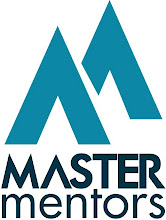The
world is changing at the speed of thoughts. Businesses’ today face the stiff challenge
of keeping up with the speed and continuously reinvent themselves to compete in
the fierce global market. The market is fast changing and the consumers have more
options than ever before. So, how does a company cope up with all the pressure
of competition and staying relevant in a fast changing world? The most
successful companies are those that are prepared to handle the changing
landscape by staying
ahead of the competition. They constantly change as per the demands of the
market, while there are others who are left behind in this race. Polaroid is a
great example of a company that revolutionized instant photography, however, it
failed to capture market share in digital photography. The retail powerhouses
like Kmart, Sears and Montgomery Ward could not keep pace with the rapidly
changing needs.
However, the most successful companies constantly
reinvent themselves like Wal-Mart, which ventured into low priced markets that
the others could not exploit and also by using technology to outsmart its
competitors. It is paramount that the companies stay relevant and look at every
possible opportunity to reinvent as per the changing requirements of the
market.
Innovation is a process that constantly refuels an organisation. The differentiating factor between the companies that survive and those that do not is often the ability to adapt. Companies that do not innovate, they stagnate. Here is a look at the attributes of the most successful companies to reinvent themselves and staying relevant in the changing times.
Innovation is a process that constantly refuels an organisation. The differentiating factor between the companies that survive and those that do not is often the ability to adapt. Companies that do not innovate, they stagnate. Here is a look at the attributes of the most successful companies to reinvent themselves and staying relevant in the changing times.
- Staying Customer Centric:
It is imperative for businesses to stay in touch with their customers and needs. Understanding the changing needs of the customer is a sure fire way for innovation. - Breeding Innovation:
Most companies around the world that are innovative conduct a series of experiments to help create new products and services or improve upon existing ones. - Creating value through novel ideas:
An idea that is translated into the product or service for the consumer is innovation. Successful companies create an environment where people are encouraged to come up with new ideas that improve the existing processes and solutions. - Keeping an eye on the competition and
the market:
To constantly improve one must be aware of the market dynamics and the evolving needs. Market feedback is a great way to track and gauge the progress. - New products and innovations help the
company to stay relevant:
Some companies like Apple follow a top-down approach in building their products and services. When Apple ventured into the cell phone market, it did not look at Nokia, RIMM and others. It followed its philosophy of ‘Think Different’ and created an iPhone that revolutionised the cell phone industry. - Understanding and addressing the needs
of the customers better than the competition:
The companies that take care of the clients take the business. The idea is to address the problems that the customer faces and come up with the best possible solutions for them. - Encourage people to try, even though
they may fail:
Great companies like Apple, Google, etc encourage their employees to experiment, without worrying about failures. The emphasis is on trying things and not necessarily on results. - Collaborations and build on ideas:
When people collaborate and intermingle they tend to come up with great solutions. Everyone is not an expert in everything, the idea is to make people learn from each other and build a synergy. - Attract, develop and work with the best
people:
The best companies hire the smartest workers, train them and create an information pool to build the best products and services. The most passionate people end up creating the most innovative products. - Execution is
the key:The key to innovation lies in its execution. Ultimately, the ideas that bring
value are those that get executed. Below is an example of how the key metrics can
be identified for strategic execution and implementing innovation in an organisation.
Metric |
Strategy for execution |
Environment |
Open and free environment
Encourage experimentation
Collaborations and synergy between teams
Facilitate learning and growth
Bring value to the customer and services. Launch new idea campaigns. |
Market
|
Understand the needs of the customers and market
Identify the market segmentation and where you fit
Develop a communication channel with your customers
Analyse the market trends and supply/demand gap
|
Products/Services
|
Distinguish yourself from the competition
Add value to your products by addressing the needs of the
customer
Understanding what customer needs rather than what he says and delivering it
A roadmap for R/D and evolution as per the dynamics of the
changing needs.
|
Resources
|
Align resources for achieving the objectives and
delivering the quality products/services
Knowledge sharing and continuous learning atmosphere to
give them best chances of making
great contributions & deliver the best products/services Create an agile methodology where people, processes and systems are streamlined as per the business demands. Plan to implement and incorporate new ideas into products and services. |
Leveraging technology
|
Simplify and organise
Standard reporting and relevant data to make better
decisions
Improving the efficiency of execution by workflow enabling
process integration
Streamlined data, policies and processes for faster
turnarounds
Ratio of ideas that are Ideas submitted to Ideas implemented. |
Feedback
|
Interact and get the feedback from the customers.
Innovation makes things easy and simple for the customers. A great product/service is developed when the customer requirements are met. |
Timelines
|
Create a deliverable planning schedule and define the key
milestones for execution.
|
For more details please contact apoorvedubey@gmail.com

No comments:
Post a Comment